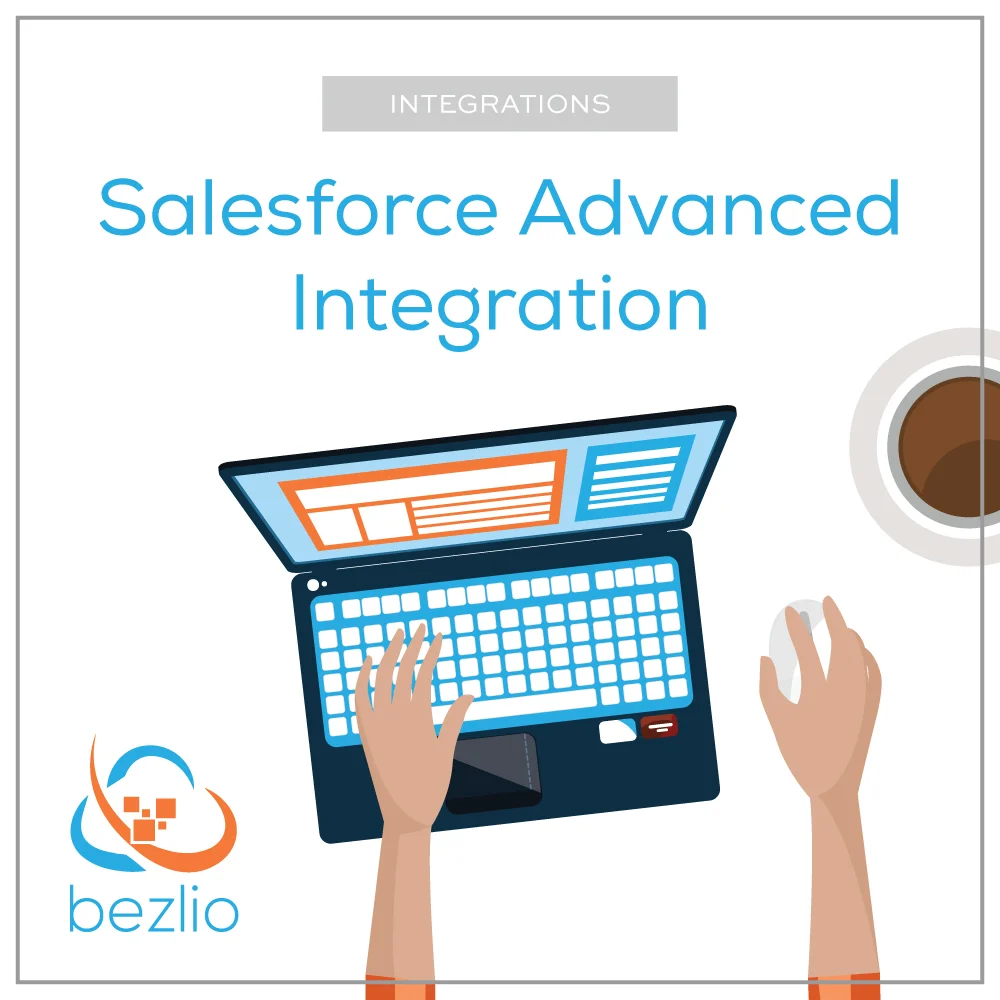Use Bezlio to Embed Integrated ERP Data Into Salesforce Screens
If you are a Salesforce user, how often have you wanted to see "contextually aware" data from another data source without leaving Salesforce? What if you wanted to see your customer's order history? Or their open invoices?
If you are a developer, have you ever tried to figure out how to integrate your ERP or any other backend systems with Salesforce, without having to sync all of that data to the cloud?
If you can answer yes to any of those questions, then Bezlio is where it is at!
Imagine working and updating your Salesforce data, while also accessing and updating your ERP information. All on the same screen. All without the complicated syncing you would traditionally have to use to tie all of this together!
Follow along as we utilize Bezlio to embed your on-premises data into Salesforce, with contextual awareness!
Assumptions
The following steps assume you have the following pre-requisites:
A Salesforce account with one of the following editions which include the Visualforce feature: Contact Manager, Group, Professional, Enterprise, Unlimited, Performance, and Developer Editions.
A Bezlio account, with our BRDB application installed and configured inside of your network to work with your data sources.
Queries are written to pull the appropriate data from your data sources.
Step 1 - Add a New Visualforce Page
The first thing you will want to do is create a Visualforce page. In your Salesforce menu, go to Setup / Build / Develop / Visualforce Pages.
Click "New" and use the following code.
<apex:page standardController="Account"> <apex:iframe src="https://portal.bezl.io?account={!account.name}"/> </apex:page>
This example assumes you want to pass in the account name, but you could pass in any data that Salesforce has.
Save this page as 'Bezlio.'
Step 2 - Embed Bezlio Visualpage Into Your Salesforce Page
Next, we need to go to the page in Salesforce you want to insert our new Bezlio window.
Click the "edit layout" link.
From there drag 'Section' from 'Report Charts' to give yourself a new section wherever you would like Bezlio to sit.
Next, scroll down to Visualforce pages and drag Bezlio into this new section.
Step 3 - Power-up Your Bezlio Window
Now we get to the fun part! You will notice in the format of our URL that we are passing in a parameter for 'account.' Any parameters that you pass like this can retrieve data from your Bezls and do whatever you can imagine - custom queries, updates, maps, or whatever! Bezlio does the heavy lifting, and all you need to do is retrieve the data from Bezlio!
For a simple example, we put this in ngOnInit of a new Bezl:
var getParameterByName = function (name) {
var url = window.location.href;
name = name.replace(/[\[\]]/g, "\\$&");
var regex = new RegExp("[?&]" + name + "(=([^&#]*)|&|#|$)"),
results = regex.exec(url);
if (!results) return null;
if (!results[2]) return '';
return decodeURIComponent(results[2].replace(/\+/g, " "));
}
bezl.vars.account = getParameterByName('account');
Finally, for our example, we made this the body:
<h3>You selected {{bezl.vars.account}}</h3>
Step 4 (Optional) - Hide Bezlio's Window Decoration
To optimize the UI of your new panel, you can hide all of the Bezlio window decoration by using this quick view URL instead: https://portal-dev.bezl.io/quickview/panel/Home
Summary
The options are endless here as you might imagine! Bezlio has a native Salesforce plugin, plugins for nearly every database you can imagine, and a growing number of plugins for specific ERPs, allowing you to connect to almost anything imaginable.
Keep in mind too that you can do more than reading data. Bezlio's unique framework allows for reading data but also writing back to your data sources, allowing you to perform transactions and create new records.
Bezlio's security infrastructure ensures that your data is completely safe. Your on-premises data remains right where it is, and you don't need to open any ports in your firewall. All Bezlio data is encrypted to AES256 standards.
If you need to integrate your ERP data with Salesforce, give us a shout!



